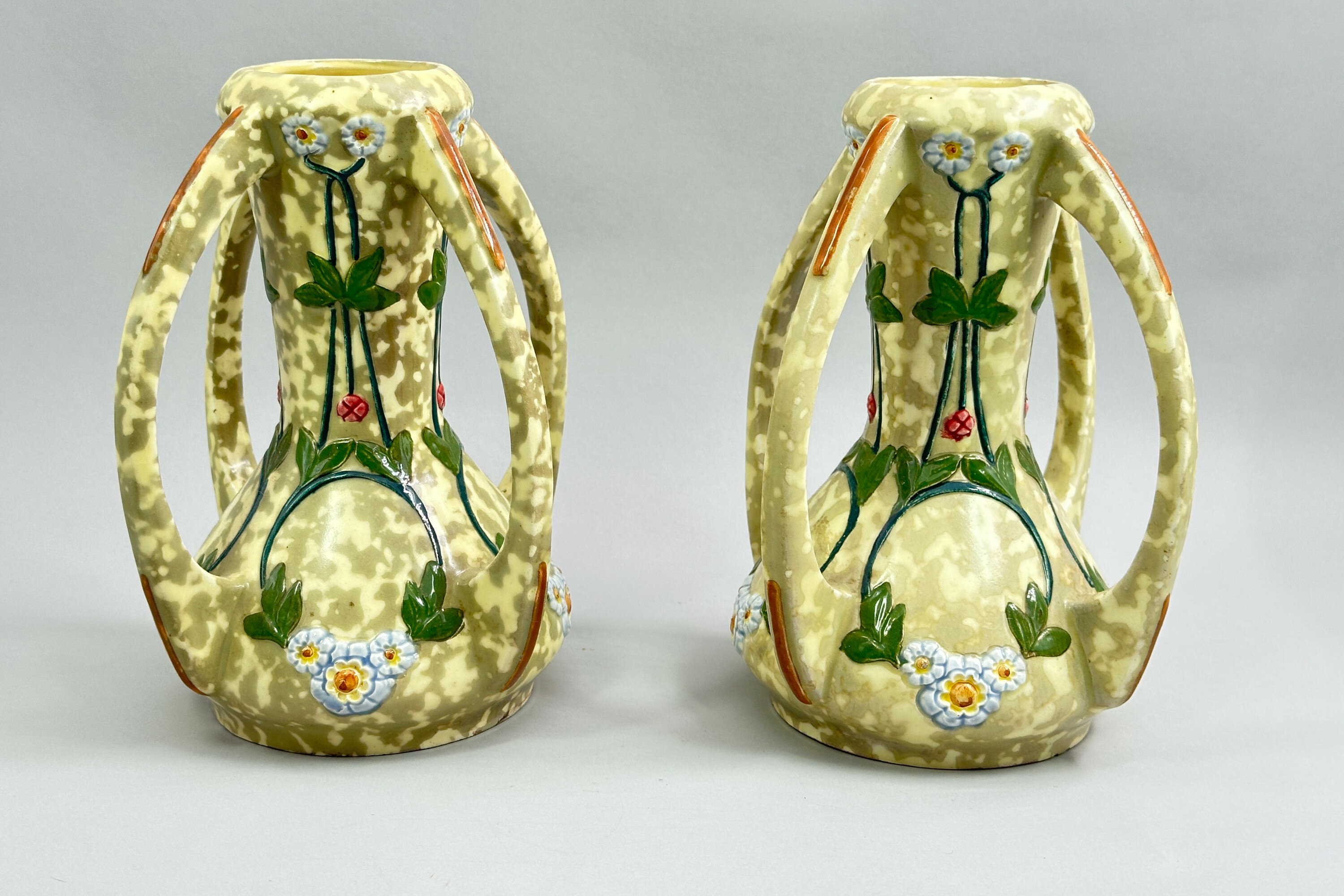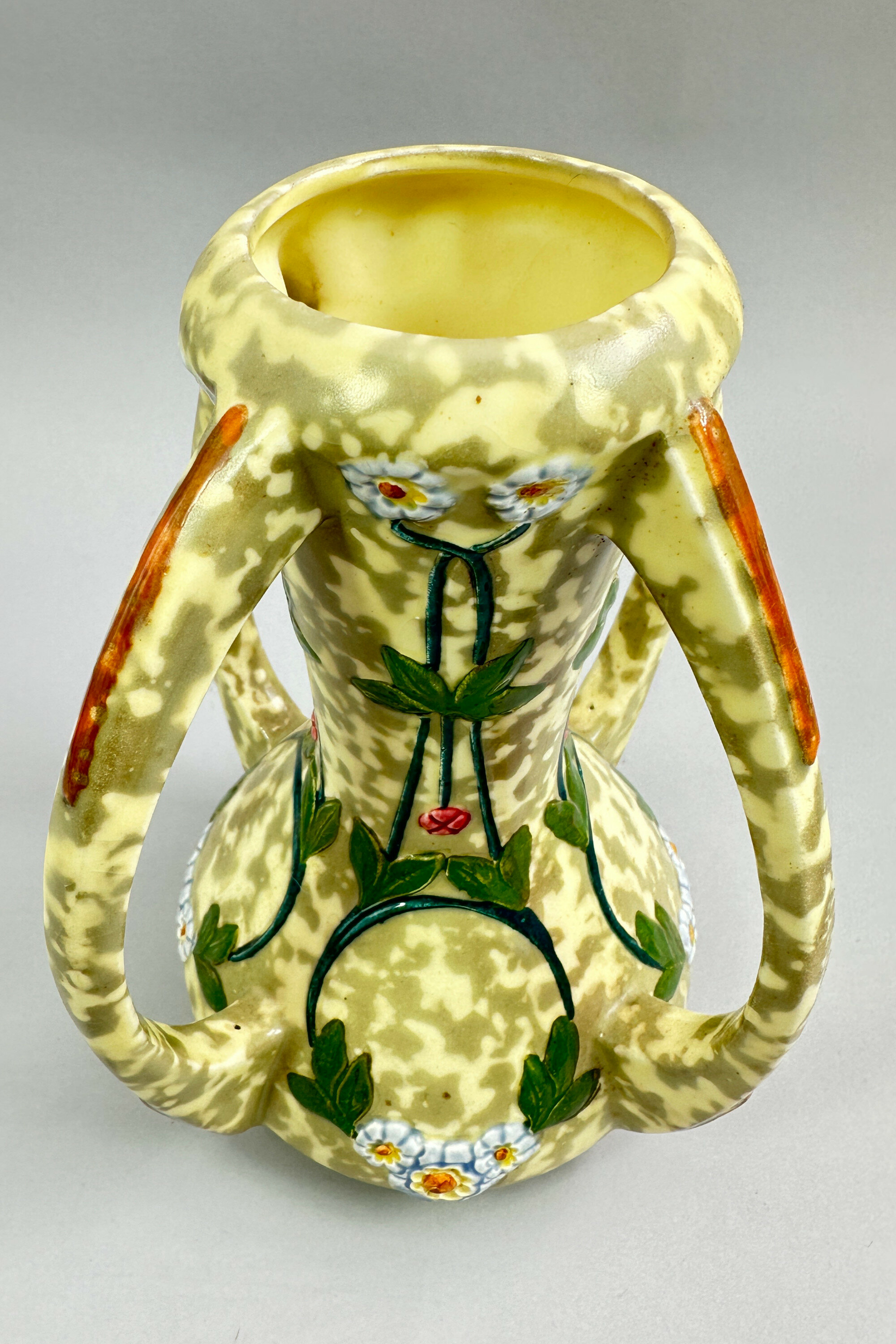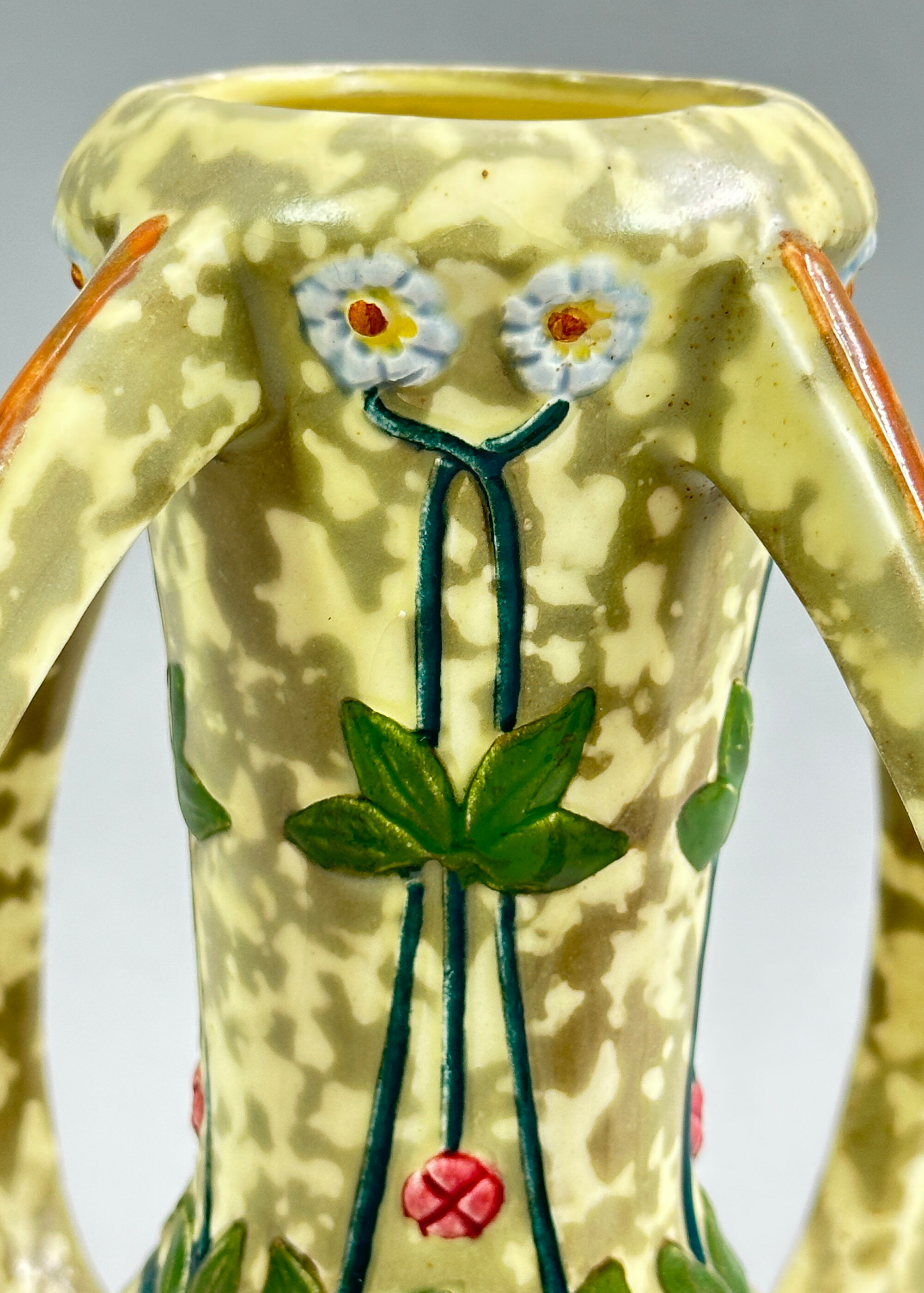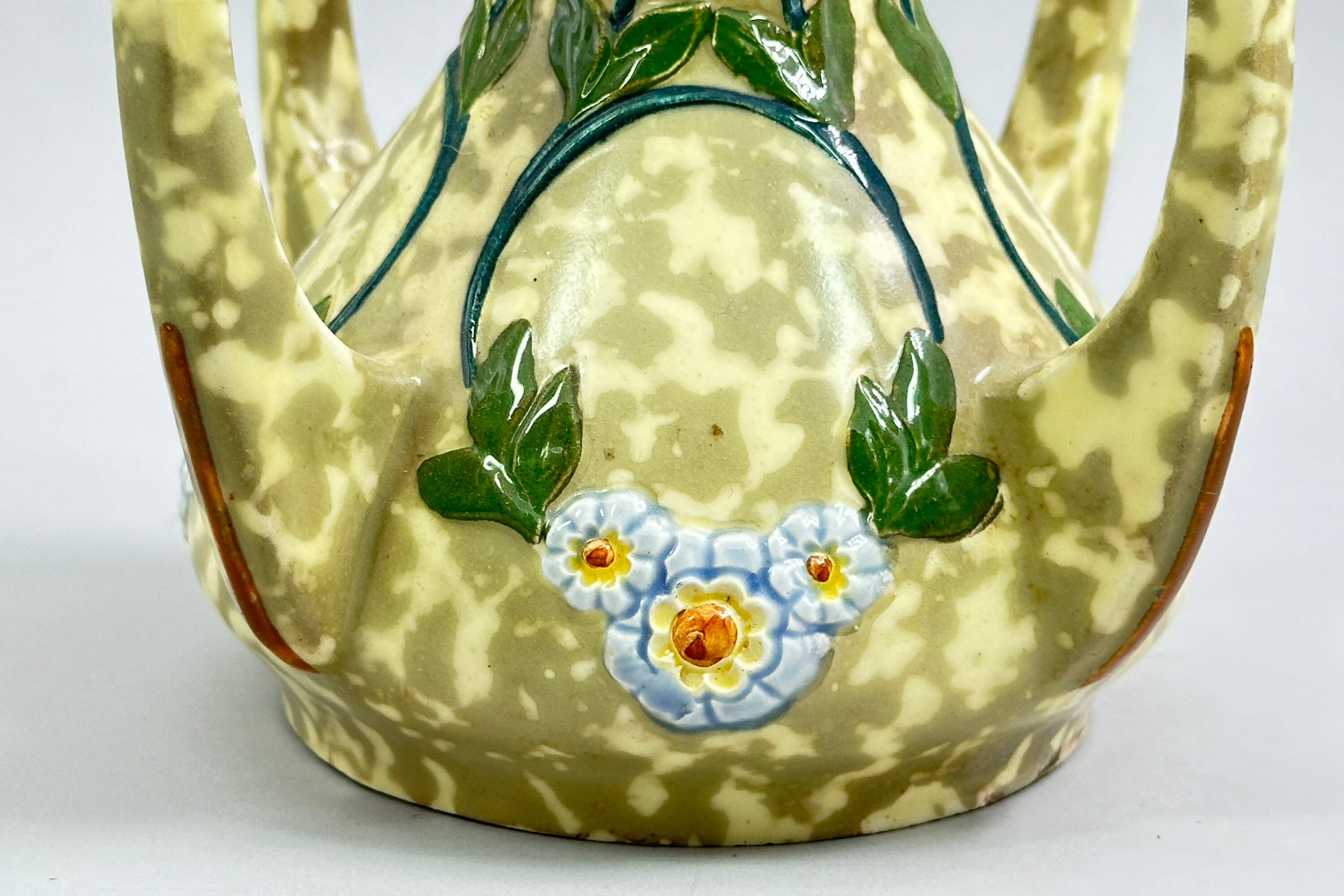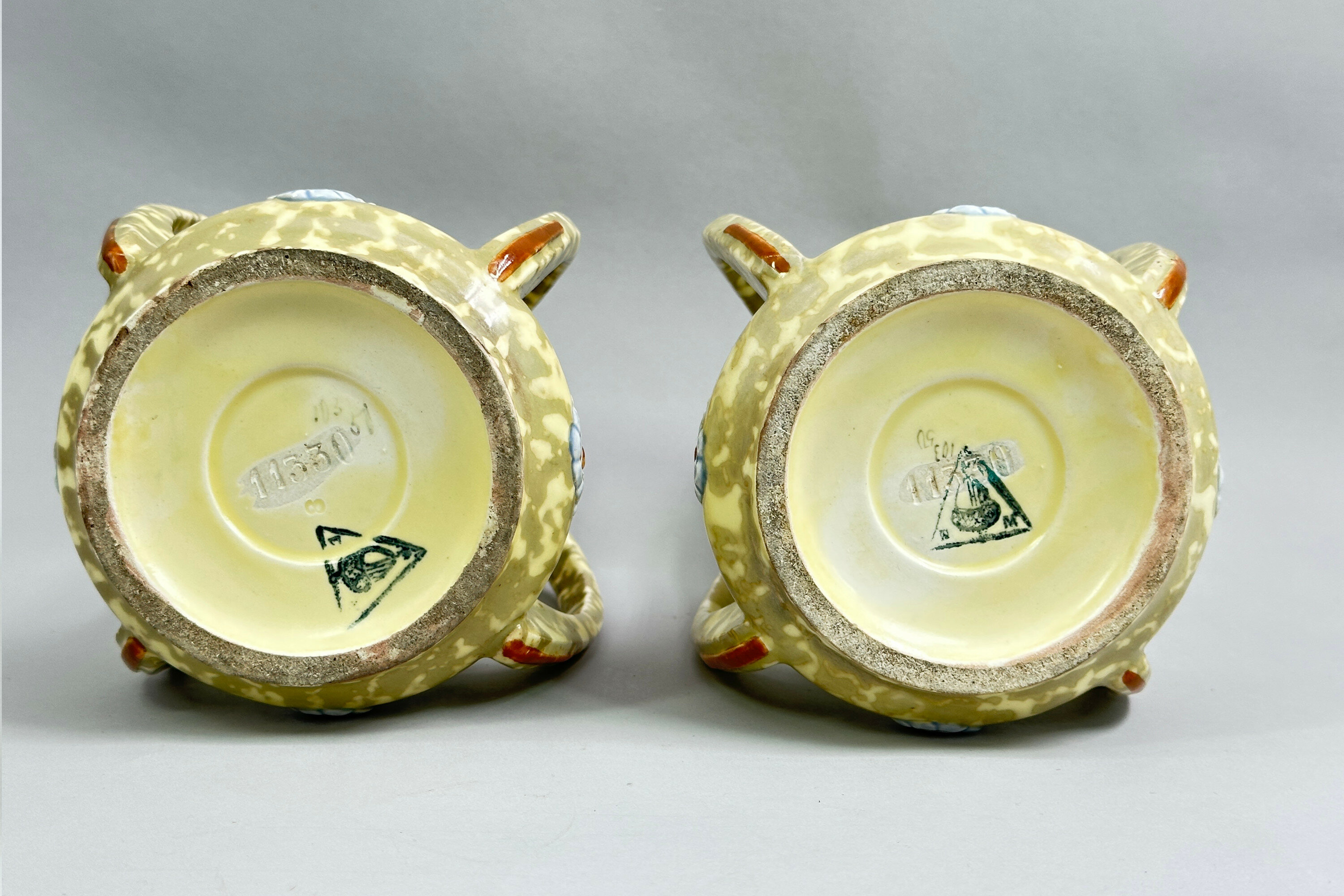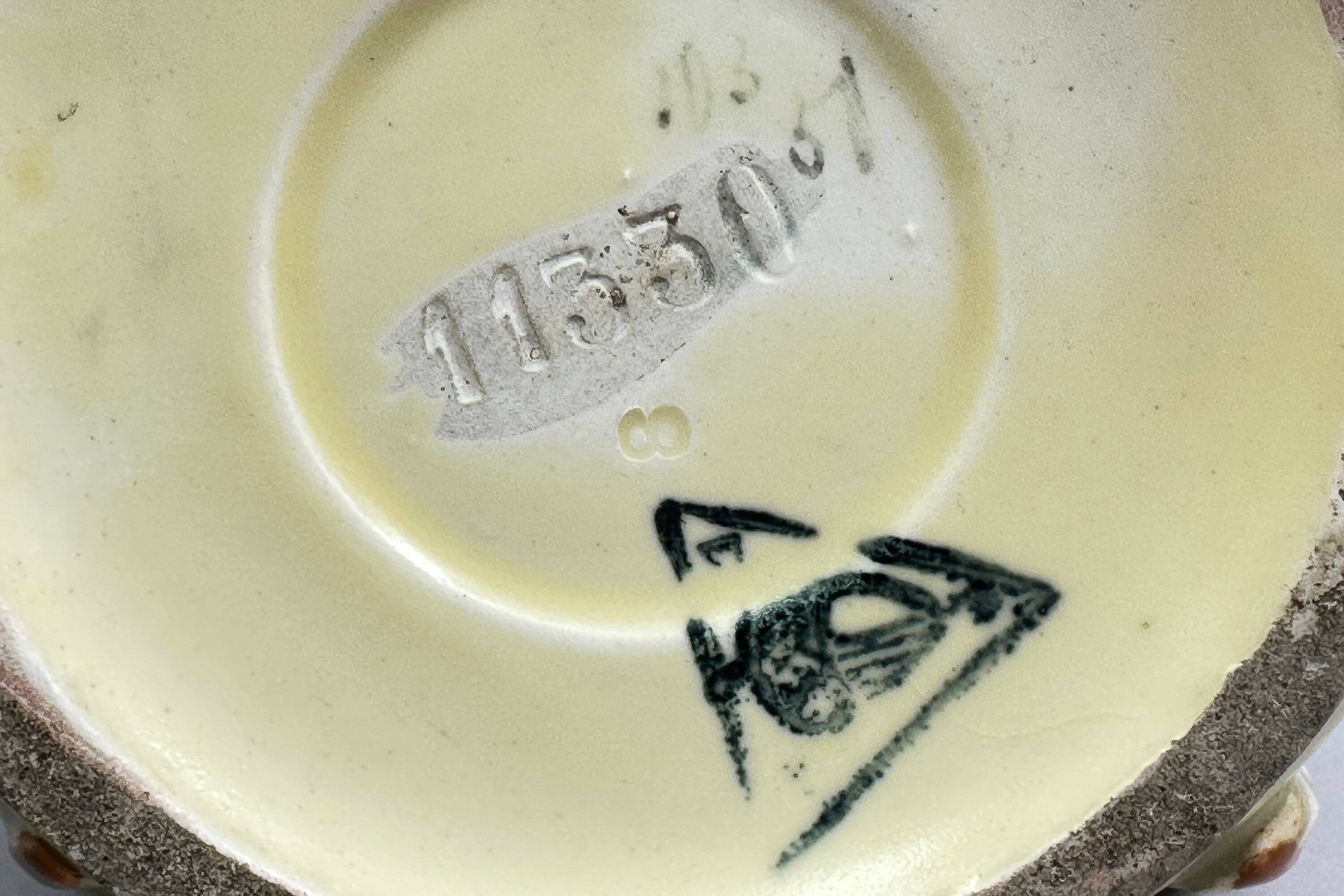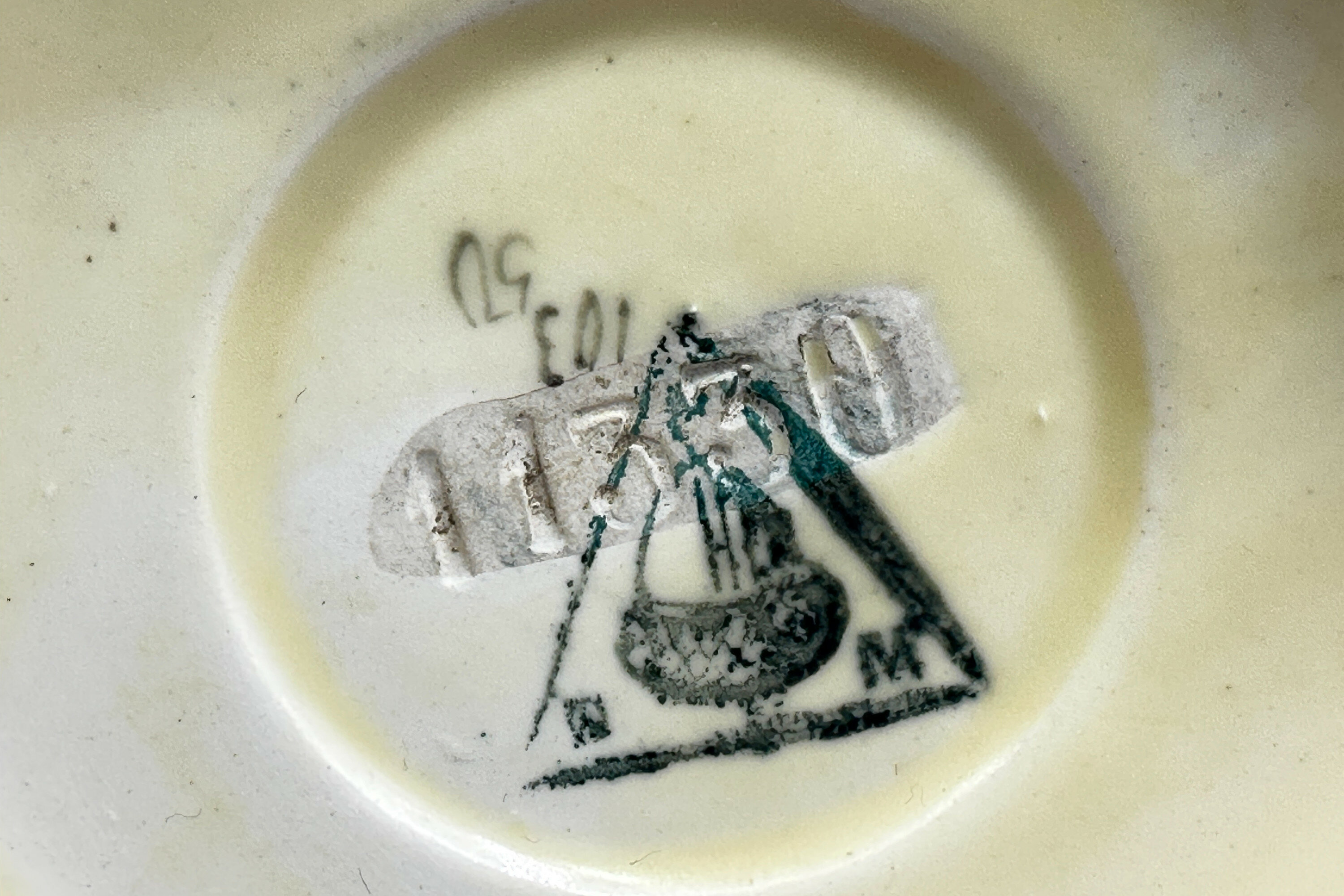Pair of Royal Dux Secessionist Style Vases, 1930s
| Current Bid: | £40.00 |
| Bid Increment: | £2.00 |
| Next Min Bid: | £42.00 |
| Buyer’s Premium: | £9.60 |
| Total Amount: | £49.60 |
| Number of Bids: | 1 |
| Location: | United Kingdom |
| Highest Bidder: | User 1248 |
| Auction Start: | 05/10/20 18:00:00 UTC |
| Auction Ending: | 14/10/20 19:34:00 UTC |
| Auction Finished : | 14/10/20 19:34:05 UTC |
LOT NUMBER 18
Pair of Royal Dux Secessionist Style Vases, 1930s
A pair of ceramic vases of semi organic form, the body tapering towards the long slightly flaring neck and the sides with four applied loop handles, decorated with stylized floral designs on a grey/beige mottled ground, the base glazed and with a transfer mark of an acorn in a triangle with the letters ‘D’ ‘P’ ‘M’ and impressed numbers ‘11330’. These vases form part of a group of ceramic items manufactured by a wide number of factories in the early C20th, including Mintons of England, and heavily influenced by the ‘Secessionist’ movement, in which contemporary artists deliberately broke away from traditional styles, which began in Austria in the late nineteenth century and soon spread to Germany and France. The organic forms of the Art Nouveau movement were a strong influence and can be seen here. Duxer Porzellanmanufaktur, or the Dux Porcelain Manufactory, was started in 1860 by Eduard Eichler in what was then Duchov, Bohemia, later to become part of Czechoslovakia. Production continued until the beginning of the second world war and beyond. The factory started to imitate designs by Copenhagen, Worcester and Sevrés and their pieces achieved great popularity culminating in the company being rewarded with the Grand Prix prize at the world exhibition in St. Louis in 1904. Their output is now now generally referred to by the abbreviated name, ‘Royal Dux’. Some of their pieces were made in the ‘Secessionist’ style, with emphasis on organic forms, as here. There is a wide variety of Royal Dux marks and the one on these vases, an acorn in a triangle (the letters ‘D’, ‘P’, ‘M’ standing for “Duxer Porzellan-Manufaktur”) , indicates a dating after 1918 suggesting that they were made in the 1920s or 1930s but almost certainly before the beginning of the second world war.
| Size: | Ht 19cm, Width (max) 15cm, Base Diam 9.5cm |
| Weight: | 980gm (Pair) |
| Date: | 1930s |
| Condition: | Perfect condition with no damage or restoration |
| Estimate: | £200 – 300 |
